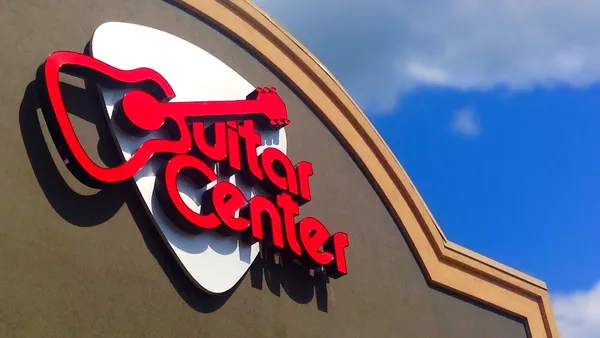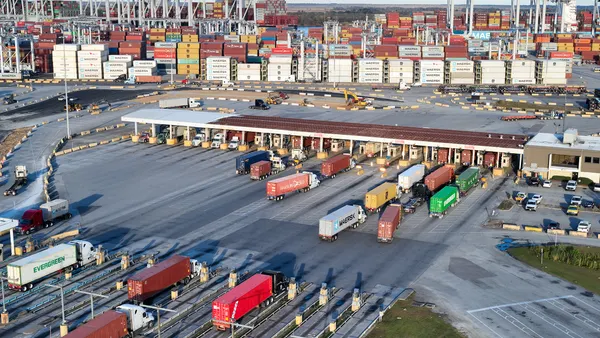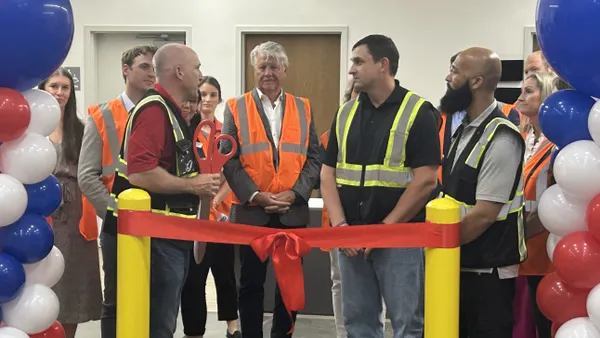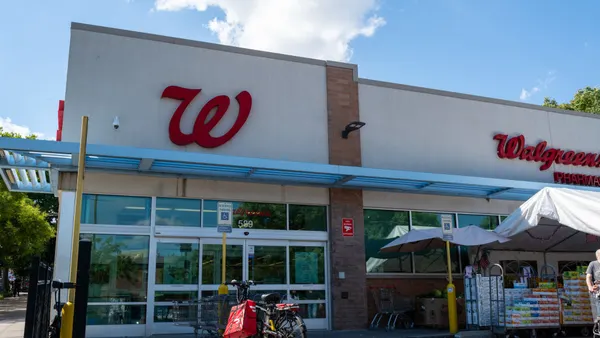This is Patent Pending. Supply chain-related patent applications are published every day and this is where we'll talk about the ones that could have the biggest impact on the supply chain and the ones that challenge the norm. We want to give you an idea of where supply chains are heading and what the industry is thinking. Read the previous issue here.
Every inch matters

In the supply chain, it's easy to get lost in the big distances — the miles between the distribution center and store, or an ocean separating suppliers and buyers. But even the small details make a difference in a supply chain, with snappy fulfillment promises and thousands of packages to account for. One of Amazon's ideas for shaving time off the fulfillment process tackles just such a detail: the space between packages on a conveyor belt.
One of the bottlenecks in a fulfillment center setting is the label applicator, Amazon said in a patent application published earlier this week. A label applicator is an automated system that, as you might have figured out from its name, applies labels to boxes. If the space between boxes is too large then the label applicator isn't functioning as quickly as possible, too small and it can't keep up. The throughput of the entire system is partially reliant on the throughput of the applicators, so ensuring they're running at maximum capacity can be important. Amazon's idea for achieving maximum throughput involves changing the conveyor belt speeds leading up to the label applicator to ensure packages are spaced out in the most efficient way.
The system uses a light source (like a laser) in combination with a photodetector (a light sensor) to recognize when a package has passed by, which allows the system to measure the distance between packages moving down the conveyor belt. If the distance observed is either too large or too small, an automated controller adjusts the velocity of the conveyor belt to achieve the optimal spacing leading to the label applicator.
Read up:
Generate shipping speed

When a customer is shopping online and reaches the delivery options in the check-out process, there are usually two or three options that vary in speed of delivery (one-day shipping, two-day shipping, etc.) and cost. But it can be difficult to set a single time and price for every customer due to inherent differences in travel time from the company's distribution centers to each customer. Walmart's idea for dealing with the difference from customer to customer is to display different information to each customer based on where they're located, according to a patent application from the retailer published earlier this week.
The difficulty with offering the same shipping speed and price to every customer arises as a result of how a company such as Walmart might organize its inventory across distribution centers. Distribution Center A on the East Coast might have a full stock of tomato soup, but Distribution Center B on the West Coast might be all out. But retailers also can't carry every item in every distribution center, especially as online marketplaces allow them to expand their offerings.
Walmart's system would be able to determine a customer's location based on the ZIP code entered for the deliver address or use a ZIP code from a previous order. The location of the customer would be used to figure out what distribution center that carries the item being purchased is closest — it won't be the same for everyone. A "speed availability system" would then take information from the retailer's inventory system to figure out what shipping speed options to display for a given customer.
Read up:
-
COVID-19 changed the stakes for e-commerce. Do fulfillment networks need to change too?
-
With the promise of faster speed, inventory moves closer to consumers
Perfecting the picking process

In a patent application filed by FedEx earlier this week, the logistics company lays out its idea for an automated picking process. It would include a local management system and data store to manage individual "business rules" for products stored throughout a company's warehouse setting. The rules would then be used by automated picking vehicles when fulfilling work orders. As is the case with any automated process, the goal is likely to decrease labor cost and increase efficiency, but FedEx does leave open the possibility that this system could be used with a manned vehicle.
Business rules can provide information on product category, vendor category, delivery category or other information for products in a work order. All of the input information will be used in creating a "virtual stack." The virtual stack would then be sent to the automated picking vehicle, which would navigate the warehouse and use a bevy of sensors to pick items, ensure they're the right product and make a physical stack of items to fulfill the order.














